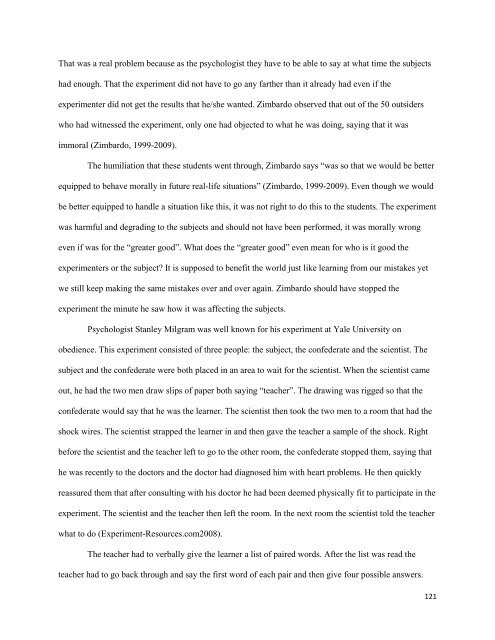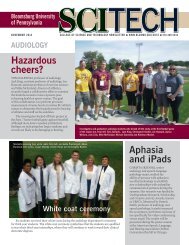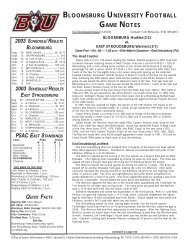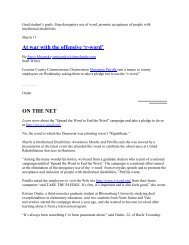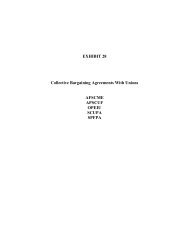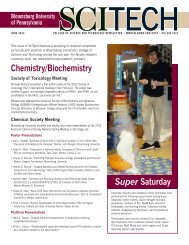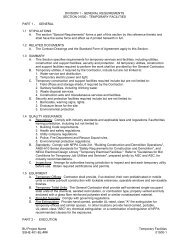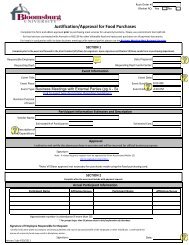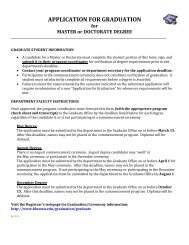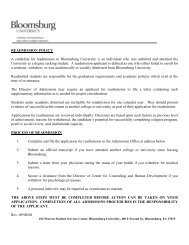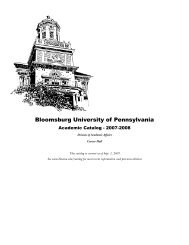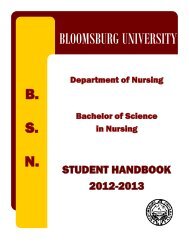Human Rights at Home and Abroad: Past, Present, and Future
Human Rights at Home and Abroad: Past, Present, and Future
Human Rights at Home and Abroad: Past, Present, and Future
Create successful ePaper yourself
Turn your PDF publications into a flip-book with our unique Google optimized e-Paper software.
Th<strong>at</strong> was a real problem because as the psychologist they have to be able to say <strong>at</strong> wh<strong>at</strong> time the subjects<br />
had enough. Th<strong>at</strong> the experiment did not have to go any farther than it already had even if the<br />
experimenter did not get the results th<strong>at</strong> he/she wanted. Zimbardo observed th<strong>at</strong> out of the 50 outsiders<br />
who had witnessed the experiment, only one had objected to wh<strong>at</strong> he was doing, saying th<strong>at</strong> it was<br />
immoral (Zimbardo, 1999-2009).<br />
The humili<strong>at</strong>ion th<strong>at</strong> these students went through, Zimbardo says ―was so th<strong>at</strong> we would be better<br />
equipped to behave morally in future real-life situ<strong>at</strong>ions‖ (Zimbardo, 1999-2009). Even though we would<br />
be better equipped to h<strong>and</strong>le a situ<strong>at</strong>ion like this, it was not right to do this to the students. The experiment<br />
was harmful <strong>and</strong> degrading to the subjects <strong>and</strong> should not have been performed, it was morally wrong<br />
even if was for the ―gre<strong>at</strong>er good‖. Wh<strong>at</strong> does the ―gre<strong>at</strong>er good‖ even mean for who is it good the<br />
experimenters or the subject? It is supposed to benefit the world just like learning from our mistakes yet<br />
we still keep making the same mistakes over <strong>and</strong> over again. Zimbardo should have stopped the<br />
experiment the minute he saw how it was affecting the subjects.<br />
Psychologist Stanley Milgram was well known for his experiment <strong>at</strong> Yale University on<br />
obedience. This experiment consisted of three people: the subject, the confeder<strong>at</strong>e <strong>and</strong> the scientist. The<br />
subject <strong>and</strong> the confeder<strong>at</strong>e were both placed in an area to wait for the scientist. When the scientist came<br />
out, he had the two men draw slips of paper both saying ―teacher‖. The drawing was rigged so th<strong>at</strong> the<br />
confeder<strong>at</strong>e would say th<strong>at</strong> he was the learner. The scientist then took the two men to a room th<strong>at</strong> had the<br />
shock wires. The scientist strapped the learner in <strong>and</strong> then gave the teacher a sample of the shock. Right<br />
before the scientist <strong>and</strong> the teacher left to go to the other room, the confeder<strong>at</strong>e stopped them, saying th<strong>at</strong><br />
he was recently to the doctors <strong>and</strong> the doctor had diagnosed him with heart problems. He then quickly<br />
reassured them th<strong>at</strong> after consulting with his doctor he had been deemed physically fit to particip<strong>at</strong>e in the<br />
experiment. The scientist <strong>and</strong> the teacher then left the room. In the next room the scientist told the teacher<br />
wh<strong>at</strong> to do (Experiment-Resources.com2008).<br />
The teacher had to verbally give the learner a list of paired words. After the list was read the<br />
teacher had to go back through <strong>and</strong> say the first word of each pair <strong>and</strong> then give four possible answers.<br />
121


